Unfinished Canadian Northern Railway line Fort MacLeod
The berm we see here, cutting across a farmer’s field, is in fact the grade of a proposed rail line, unfinished and abandoned before completion. Passing by it seems of little significance, but over one hundred years ago when it was built, there were great plans afoot to open up the agriculture potential of the area south and west of Fort MacLeod Alberta.
Built under the charter of the Alberta Midland Railway, a Canadian Northern Railway (CNoR) subsidiary, a line was planned south from Calgary, into Fort MacLeod, then south then west to a point on the map called Fishburn – today called Twin Butte – a proposed town, but never more then a crossroads. They even planned to go further west but it’s unclear where, although Pincher Creek was mentioned as one possibility. It’s safe to say they had their sights set on BC, based upon some maps this author has seen which show some possible routes the line could potentially use.
The grade we see here dates from 1912 and two sections of this line were completed before they abandoned the project. One travelled south of Calgary to a point near High River (some traces can be found) while the other is the the subject of this report. Work, outside of presumably surveying, was never started on the middle section. Even so, they still managed to complete a significant amount of work before the plug was pulled.
This entire line would have been well over 200km long and was significant as it would have allowed the CNoR to penetrate deep into CPR territory. For quite some time that railway enjoyed an uncontested monopoly in the area and this new line would have broken that. It’s was to be a large and ambitious undertaking.
This author, using Google Earth, has been able to identify and follow the old grade from Fort MacLeod, to a point perhaps approximately half way to its intended destination. It initially heads south, then turns west at the Waterton River, roughly paralleling it but above it on the prairie, to a farmer’s field where it unceremoniously ends. About half the route can be easily spotted, even in person, and the grade is obvious. The rest of the way, the route has been plowed under with little or nothing to be seen. Even so, it’s amazing to think that even a hundred years later, the work done can still be discovered.
We are unsure if the rail bed as we see it was ready for track or if its only a rough grade and further work was needed. From what we can see, no bridges were yet constructed along the line, nor any other infrastructure for that matter.
It’s not clear why the line was unfinished. Perhaps funding ran out, or in rethinking the line, it’s possible they realized it may not have been the money maker hoped for. It was a real leap of faith after all and at the time there were not even towns along much of the proposed line, although I am sure some were planned.
It’s rare to see an unfinished line such as this, but even so this author has been able to identify many in the province, some of which I am sure we’ll visit over time.
This line was built during the great railway construction boom that took place in the early decades of the twentieth century (the busiest period was 1910-1930). At that time, rail lines across the prairies were being built at a feverish pace and anywhere there was a town, no matter how small, a rail line would be built to it. In fact sometimes a line was built where there was no towns, in hopes that some would spring up after a line was built. Wow! Later all the railways would regret building these lines, most were money losers, and now most have been abandoned.
The Alberta Midland was a paper railway controlled by the CNoR. Using a “local” subsidiary like this offered certain advantages through various incentives and tax breaks, then if the larger company itself built the line. Of course, once it was finished, or not long after, it would almost immediately be folded into the parent company.
It would be interesting to see what would have happened had the line been finished. One thing is for certain, the whole area would have been a totally different place than what we see today.
The Canadian Northern Railway amalgamated with a number of other lines in the early 1920s becoming the Canadian National Railways we know today.
We plan to return to study more of this line. Plus we hope to document the other section that was built near Calgary. It can be traced in places although housing developments have obliterated most of it.
On a previous visit we found some interesting railway ruins in the nearby town of Fort MacLeod and to see that report, click below…
Fort MacLeod turntable and roundhouse remains.
To see some other railway themed archaeology posts we’ve published, follow these links…
Big Valley Alberta CNoR roundhouse.
Princeton BC train station and rail yard.
If you wish more information about this place, by all means contact us!
Date: June, 2013.
Location: near Fort MacLeod, AB.
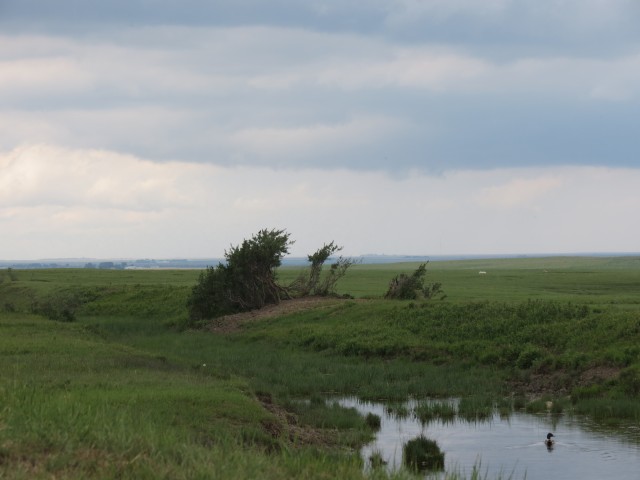
The unfinished grade of the Canadian Northern Railway (CNoR) branch line near Fort MacLeod.

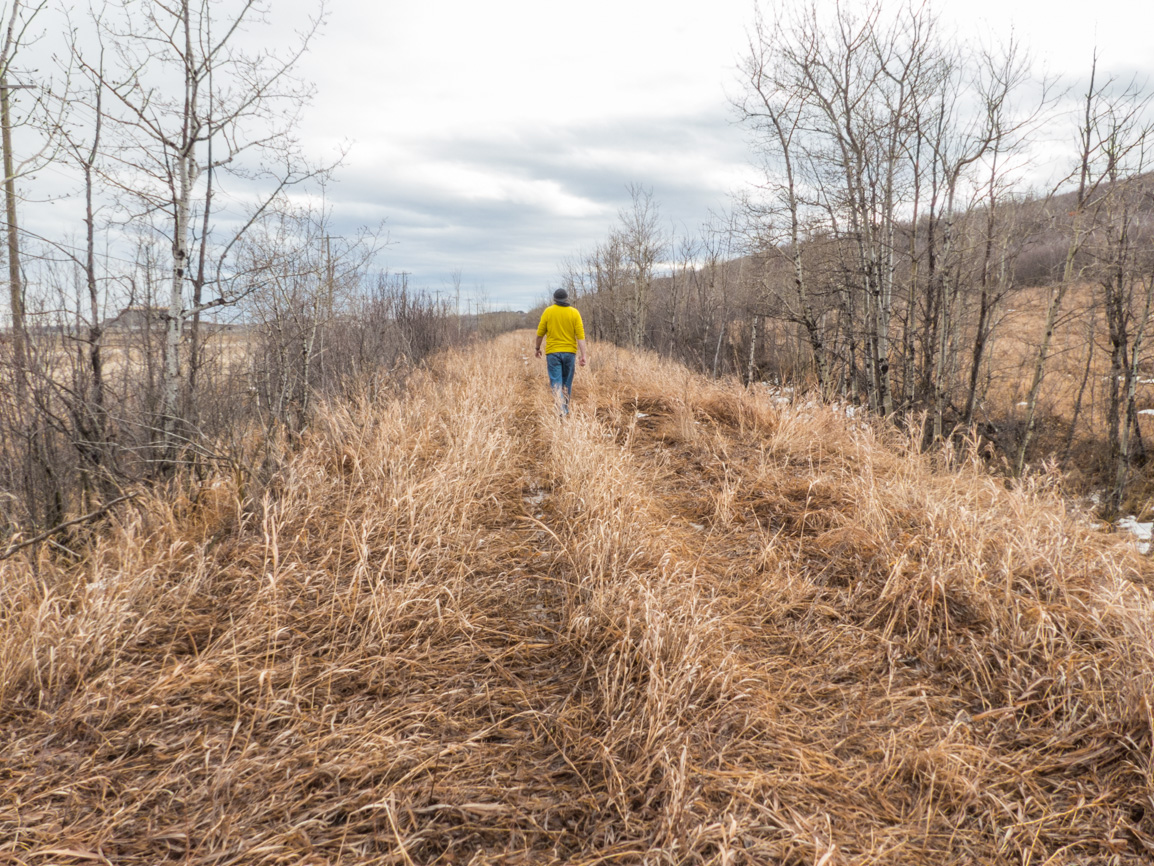
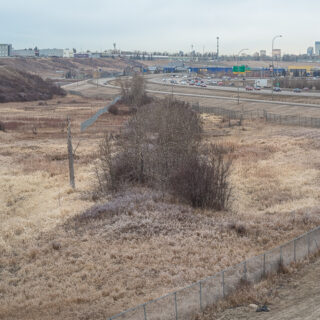
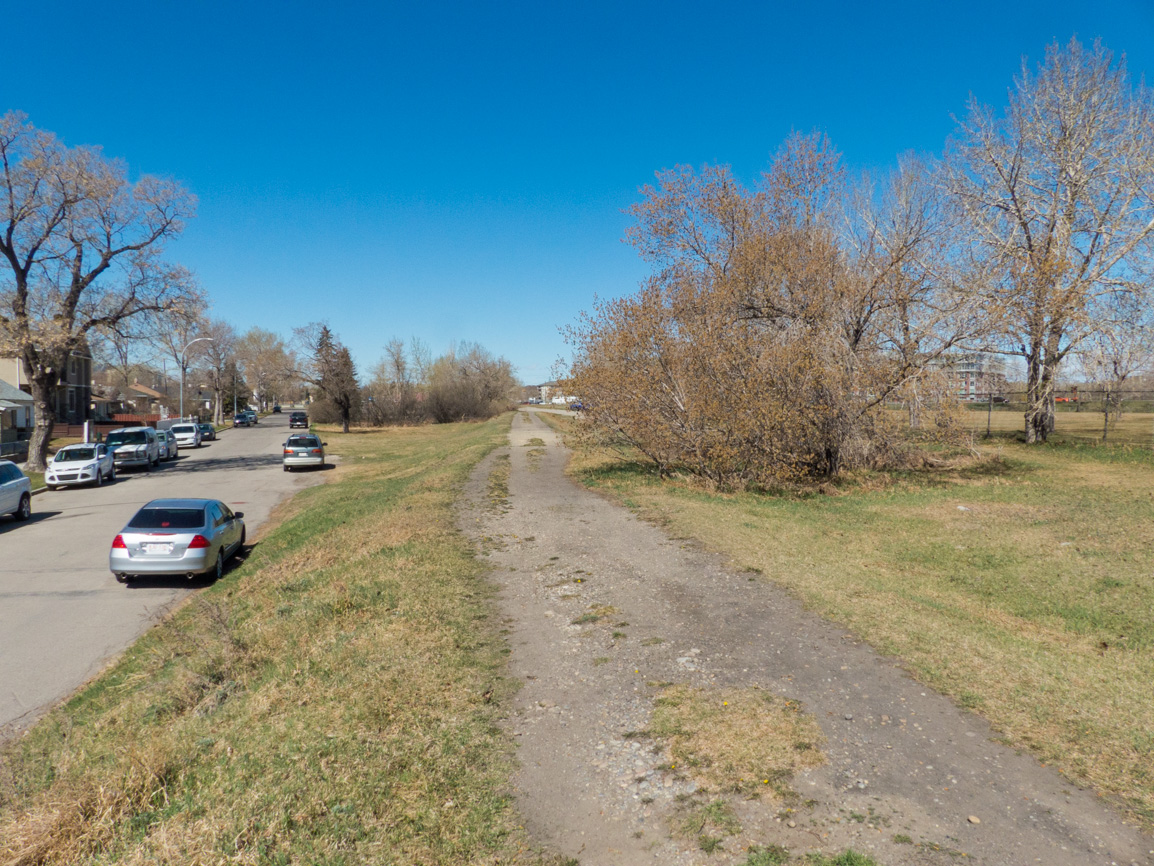
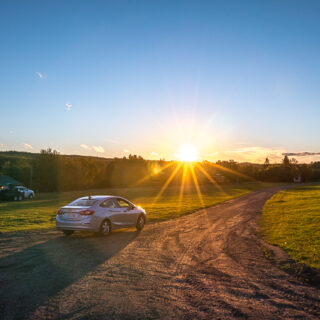
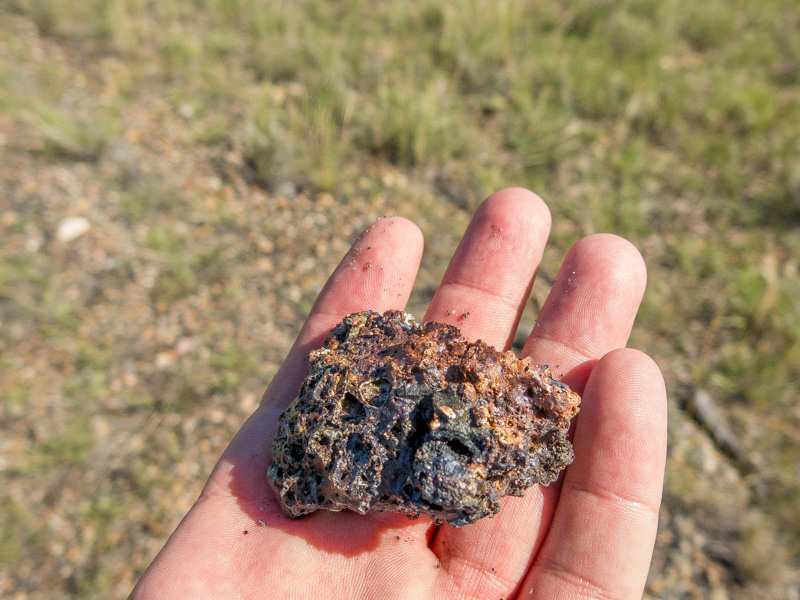
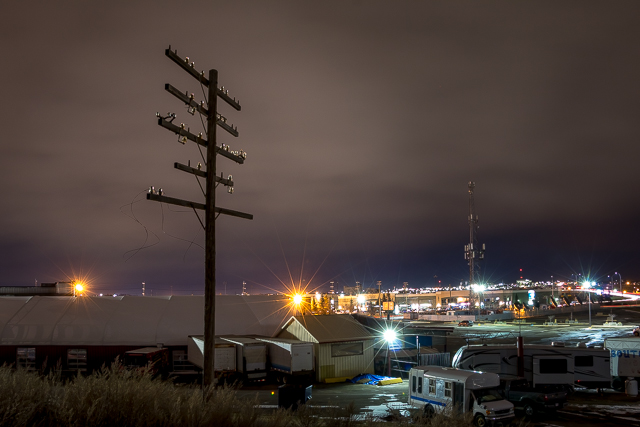
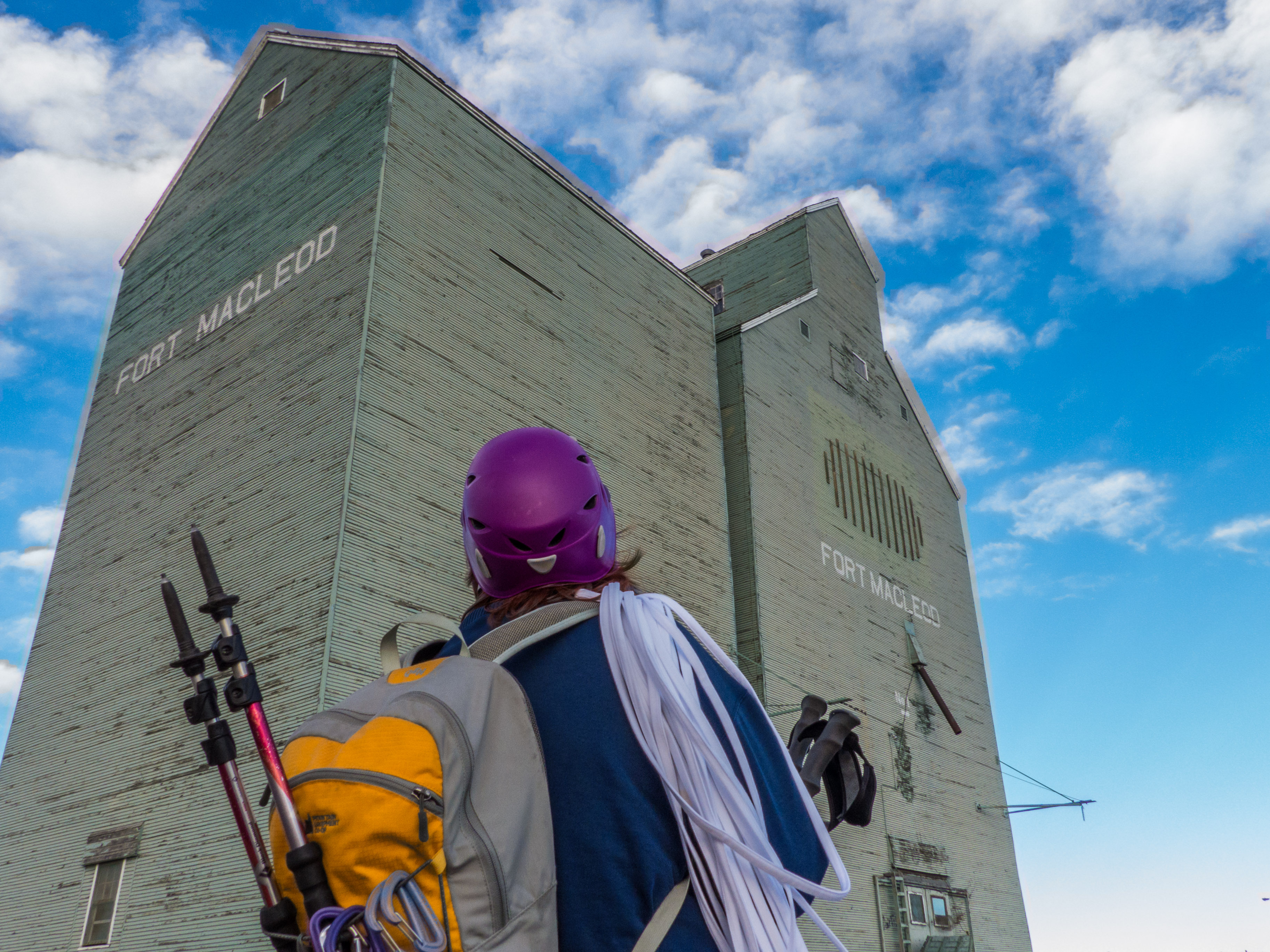
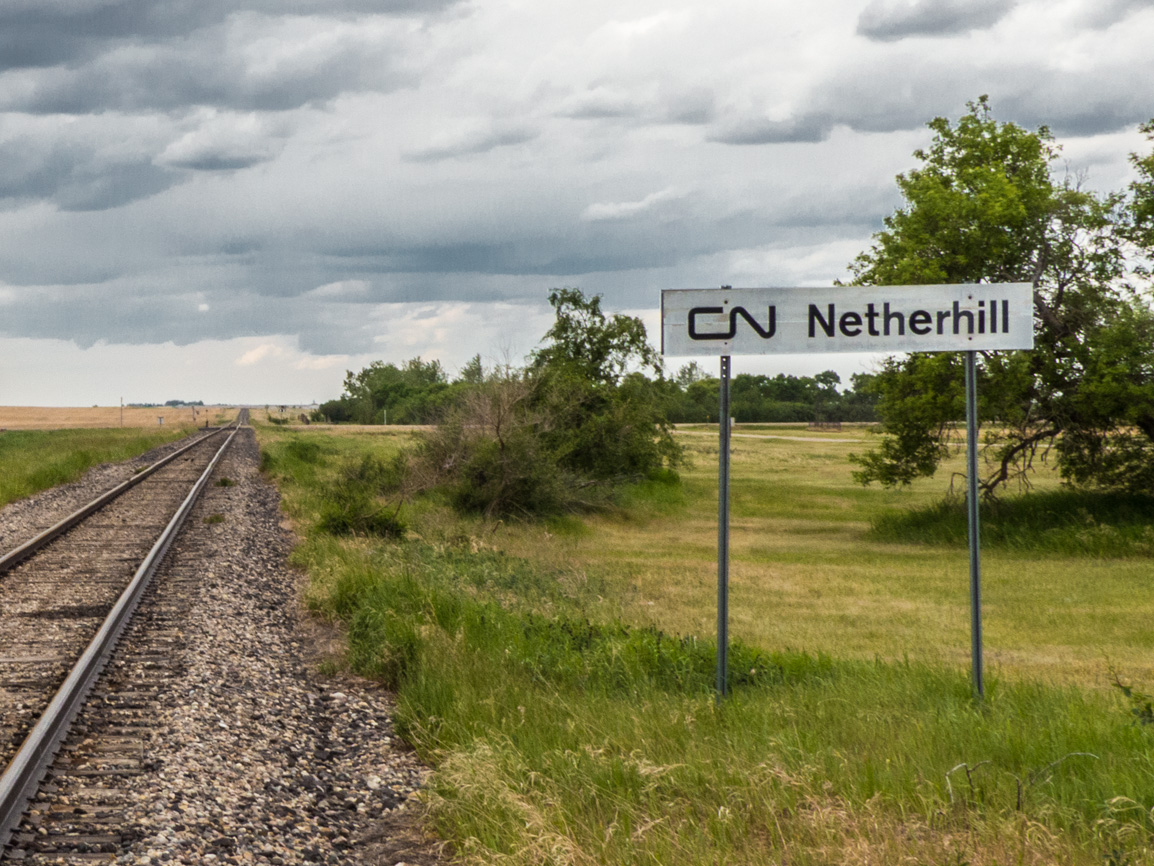
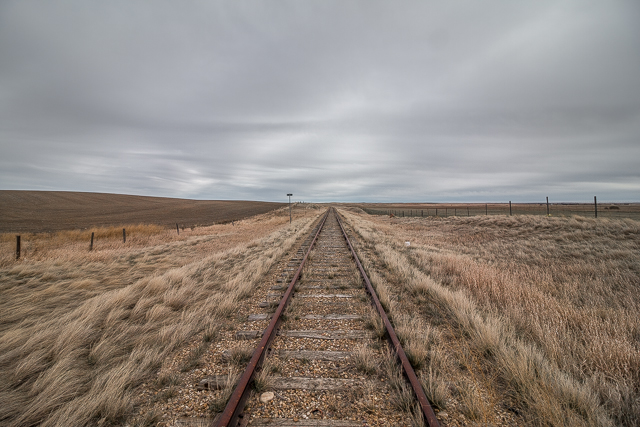
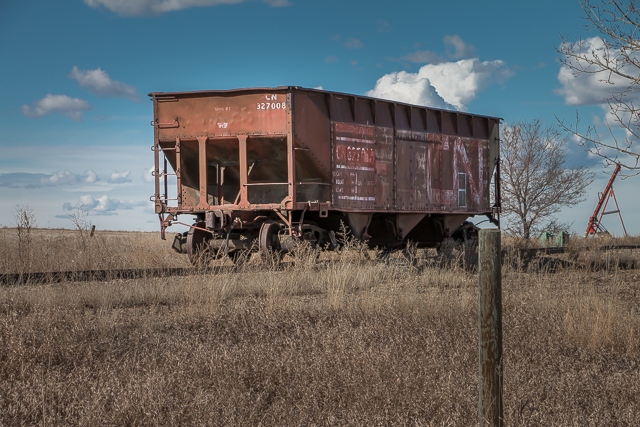
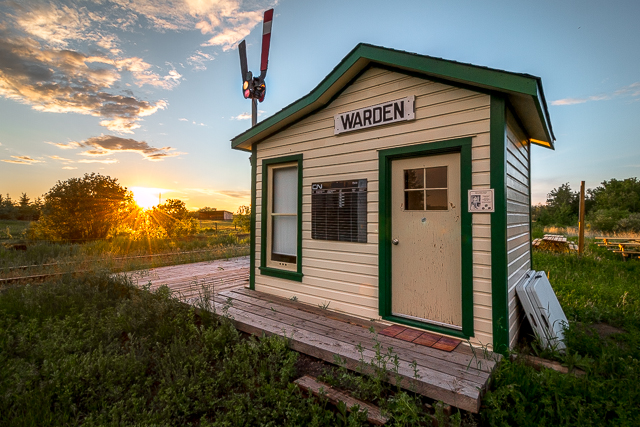
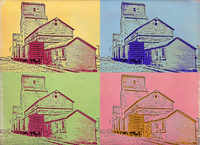






Hi….
I stumbled across this posting when I was following up on a mysterious Canadian Northern Railway line that was shown on an old map of the junction of Fish Creek and the Bow River in what is now Calgary. I love to follow up on anything mysterious and relatively unknown and this railway fits the bill. I’m going to keep researching this in hopes of answering some of the “whys”.
Paul Sutherland
Calgary
Hi Paul,
Part of that roadbed you mentioned can be followed to a point near High River. It’s hard to see in places, but it’s there. I’ve researched it, and it was to connect to the line we documented by Fort MacLeod. The CNoR hoped to break the CPR’s monopoly in the area. Of course, the project died on the vine.
Have a great week!
Thanks for your reply. The research I’ve done so far seems to indicate that rails may not have been laid on any parts of this proposed line. Only some surveying and some miles of graded road bed?
What is your take on this?
Thanks,
Paul
That’s right, only basic grading took place, but no track was put down.
I should have known the BigDoer blog would have had answered this question for me from the outset! The land titles online map shows this track as Canadian National, but I suspect that was a transcription error (CNR/CNoR) – I’ve been researching some of the history in the community I live, which parallels the bow bottom area described by Paul – and followed the track through some airphotos. Too bad there won’t be any rail remnants along this unique route – but it is amazing how it impacts the landscape for many decades. Thanks for this great history Paul and Chris.
-David from South Calgary
Check out this post…Unfinished Railway Line Calgary
Yes, that could be a typo as the line was build long before the CNoR was amalgamated into the CNR. Or maybe it was held on to a for a long time in hopes the project could be restarted at some point. Either way, it’s fascinating. How amazing that something built so long ago, then forgotten, can be found if you just take the time to look.
The funny thing was, the Galts had at one time actually proposed to extend the narrow gauge (St. Mary’s River Railroad) – from Woolford south into Montana…
Wow, that’s interesting!
Hey this is cool, is this line that was supposed to go to Stirling? I didn’t know they actually started it.
The line was to travel all the way from Calgary, through Fort MacLeod, then following the Waterton River, to points west. A section of the grade near each end was started. This construction dates from 1912.